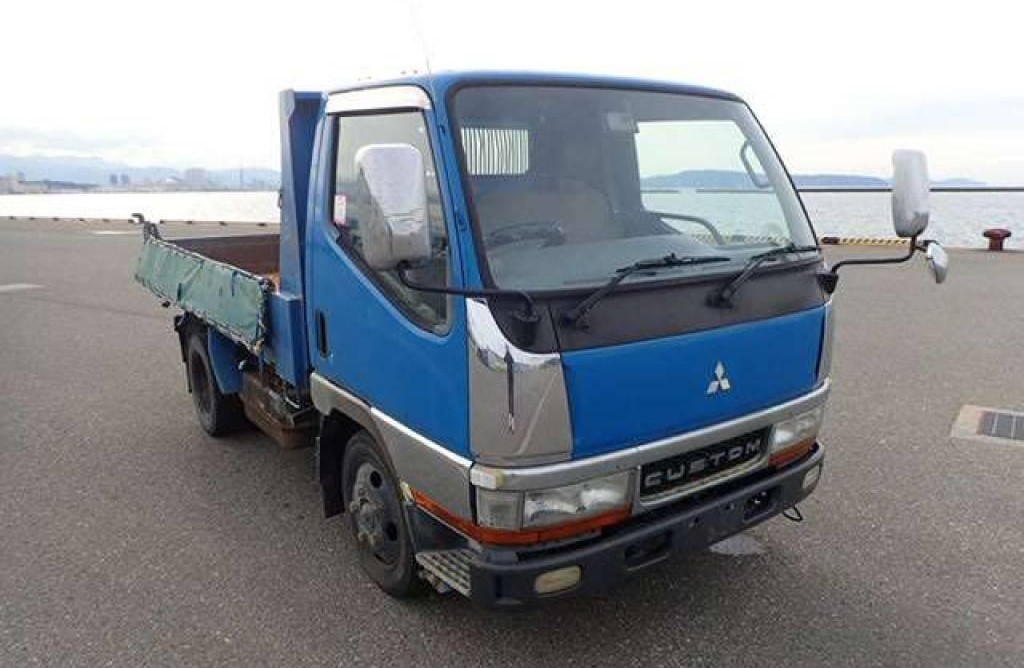The Canter is named after the English word describing the pace of a horse between a trot and a gallop. Perhaps this means that, while the vehicle is still a truck, it doesn’t have the capacity of the medium-duty Mitsubishi Fighter or the heavy-duty Super Great, we’ll leave that for the Mitsubishi Fuso Truck and Bus Corporation to admit. But one thing is certain: this vehicle has become extremely popular among East African countries.
Again, whether this is due to their durability or high-performing nature, we’ll leave that for Tanzania and her neighbouring countries to decide. Now in its eighth generation though, one cannot but wonder what kind of engine powers this workhorse of a truck. And that’s where the 4D33 engine comes in. First appearing in the fifth generation of the Mitsubishi Canter trucks, this engine has become a staple in Canter models for many years.
Mitsubishi Canter 4D33

What is the 4D33 Engine?
As you can expect, every digit in the engine code has a meaning. Figure “4” means it’s an in-line 4-cylinder engine. Also known as l4 engines, these offer a balance of power, fuel efficiency, cost-effectiveness and compact size. The letter “D” in the code simply indicates that the engine is run by Diesel. Where it gets tricky is reading the numbers after the two initial digits.
We’d have appreciated it if the numbers were just proportional to the engine displacements but apparently, Mitsubishi had other plans. For instance, while the 4D33 engine has a displacement of 4.214 L, the engine capacity of the 4D36 engine is just around 3.6 L. However, beyond what can gleaned at a glance, there are some other specs about the 4D33 engine.
For one, the engine is naturally aspirated, meaning it does not use a turbocharger to force extra air into the combustion chamber. The 4D33 engine also generates a maximum power output ranging from 110 to 140 horsepower. This power is complemented by a maximum torque of around 250 Nm to 350 Nm, providing the necessary force for demanding tasks.
One of the notable features of the 4D33 engine is its overhead valve (OHV) configuration, known for its reliability and ease of maintenance. The engine employs a direct injection system for fuel delivery, ensuring precise fuel atomization and combustion.
Besides, the 4D33 engine has a compression ratio of 18:1, which is generally considered high. Case in point: higher compression ratios typically translate to better efficiency and power output. The 4D33 engine uses a water-cooling system. This system helps regulate the engine’s temperature during operation, preventing overheating and ensuring consistent performance.
How Good is the 4D33 Engine?
In terms of fuel consumption, the 4D33 engine is fair. While the manufacturer does not provide any specific figures, users have found the vehicle’s fuel economy to be set somewhere around 5 km/L in the city and 6 km/L on the highways.
Oil Specifications
The oil capacity of the Mitsubishi Canter 4D33 engine is an important part of its maintenance. It typically requires approximately 6.2 litres of engine oil. For the 4D33, Mitsubishi recommends SAE 5W–30, ACEA-C2 or higher. This type of oil is designed to enhance fuel efficiency and provide strong wear protection. The “5W” also indicates the oil’s ability to flow easily at cold temperatures while the “30” denotes its viscosity at high operating temperatures.
Service Interval
To get the best out of your Canter and make sure that it still commands great market value, should you put it up for sale, you should maintain a regular service interval. The recommended oil change interval for the 4D33 engine is generally every 30,000 km or 12 months—whichever comes first.
Additionally, it’s important to follow the manufacturer’s guidelines for other maintenance tasks, such as replacing the oil filter, checking and topping up other fluids, inspecting the air filter and ensuring that the fuel system is clean.
What is the Difference Between 4D33 and 4D35?
| Engine/Specification | Mitsubishi Canter 4D33 | Mitsubishi Canter 4D35 |
| Production Years | 1985 – 1993 | 1993 – 1999 |
| Engine Type | Inline 4-cylinder | Inline 4-cylinder |
| Displacement | 4.214L | 4.560L |
| Bore | 108 mm | 110 mm |
| Stroke | 115 mm | 120 mm |
| Compression Ratio | 18:1 | 18.5:1 |
| Maximum Power | 83 kW (113 hp) at 3,200 RPM | 103 kW (138 hp) at 3,200 RPM |
| Maximum Torque | 304 Nm (224 lb-ft) at 1,600 RPM | 333 Nm (246 lb-ft) at 1,800 RPM |
| Fuel Injection | Direct Injection | Direct Injection |
| Aspiration | Naturally aspirated | Naturally aspirated |
| Cooling System | Water-cooled | Water-cooled |
| Valve Train | Overhead Valve (OHV) | Overhead Valve (OHV) |
| Recommended Oil Type | SAE 5W–30, ACEA-C2 or higher | SAE 5W–30, ACEA-C2 or higher |
| Oil Change Interval | Every 30,000 km or 12 months | Every 30,000 km or 12 months |
| Turbocharged | No | No |
| Typical Applications | Pick-up vans, light-duty & some medium-duty trucks. | Pick-up vans, light-duty & some medium-duty trucks. |
What is the Best Canter Engine?
The Mitsubishi Canter 4D33 engine, while renowned for its several benefits, is not without its issues. One common problem is related to the fuel injectors. Over time, injectors can become clogged or corroded, leading to poor fuel atomization. This can result in reduced engine performance, increased fuel consumption, and sometimes black smoke emissions.
The crankshaft sensor can also sometimes fail, especially as the engine heats up. This can prevent the engine from starting or cause it to stall unexpectedly. Replacing the sensor usually resolves this issue. Meanwhile, problems with the IAC valve can cause difficulties in starting the engine, particularly in cold weather.
The IAC valve helps regulate the engine’s idle speed, and a faulty valve can lead to rough idling or stalling. Electrical issues, such as faulty wiring or connections, can also affect the performance of the 4D33 engine. These problems can lead to intermittent starting issues or engine misfires.
Ultimately, while the 4D33 is a reliable option with a strong reputation, newer 4P1 and 4M series engines often offer improved performance and fuel efficiency. To know which engine is best for you, be sure to take into consideration factors like power, fuel economy, maintenance costs and part availability.
Conclusion
The Mitsubishi Canter 4D33 engine has clearly made a name for itself in the commercial vehicle market. However, like any other engine, it’s not without its challenges. Regular maintenance and proper care are mandatory to ensure its optimal performance and longevity.
While the 4D33 remains a reliable option, it is advisable to weigh the specific needs of your operation against the advancements offered by newer engine models. When all has been said and done, the best engine for your Mitsubishi Canter for sale is the one that aligns perfectly with your budget & operational requirements. You can find a Japanese-used truck with a 4D33 engine for sale at Carused.jp. With over a decade of experience in the used car market and a long-standing partnership with top Japanese car manufacturers, you can rest assured that you’ll be receiving the best quality vehicles for the cheapest price.



![Read more about the article [Clear explanation!] What is the difference between Canter and Canter Guts?](https://carused.jp/blog/wp-content/uploads/2020/06/540x400-blog-300x222.png)